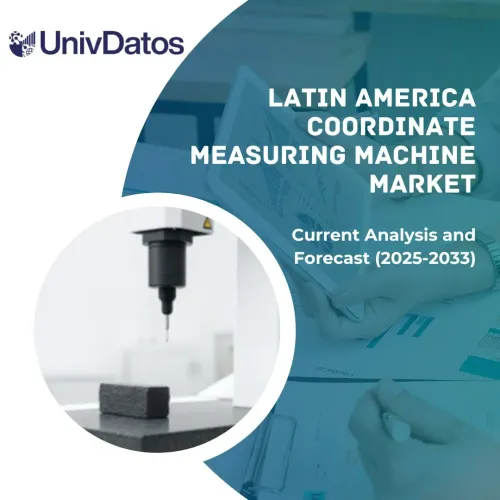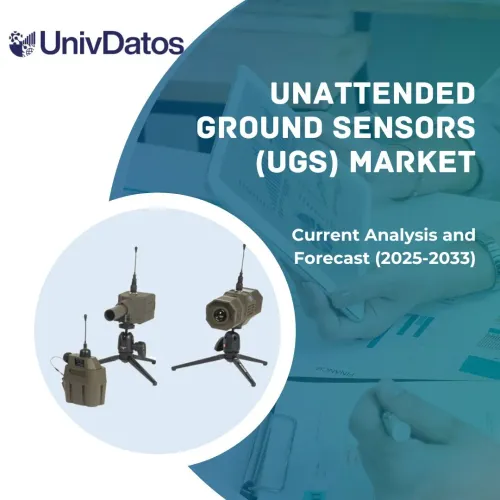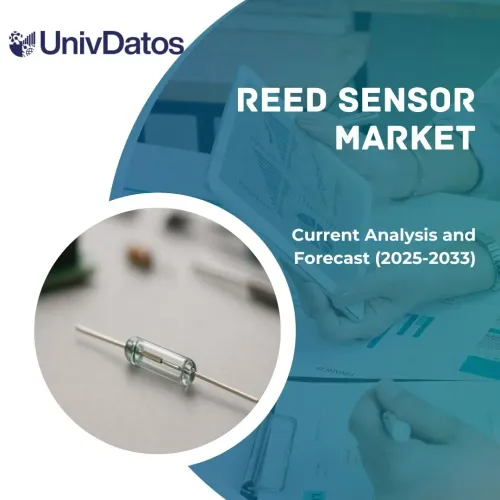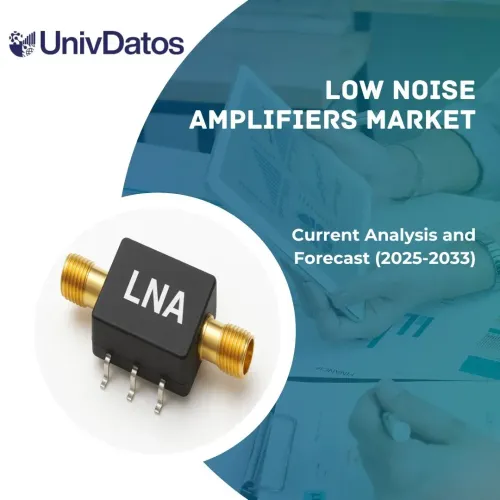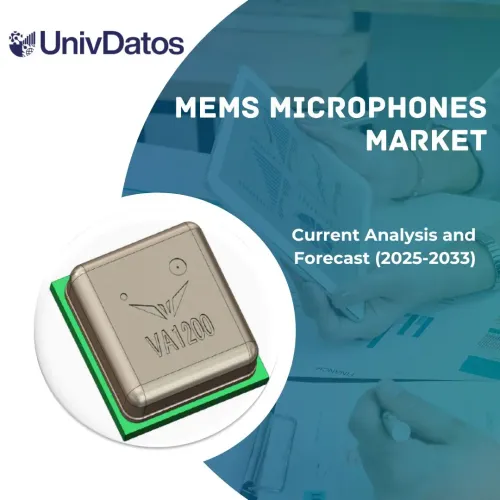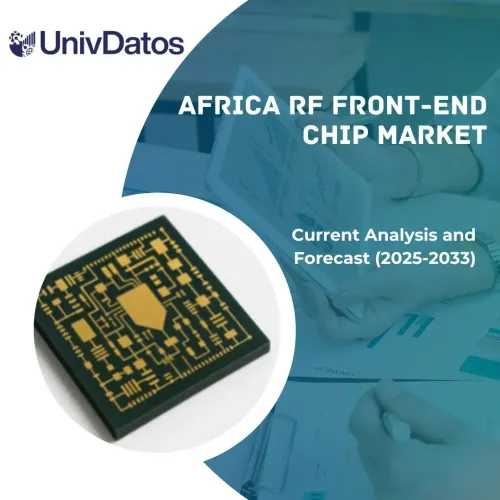- Home
- About Us
- Industry
- Services
- Reading
- Contact Us
Torque Sensor Market: Current Analysis and Forecast (2024-2032)
Emphasis on Type (Rotary Torque Sensor, and Reaction Torque Sensor); Application (Industrial, Automotive, Test & Measurement, Aerospace & Defense, and Others); Region/Country.
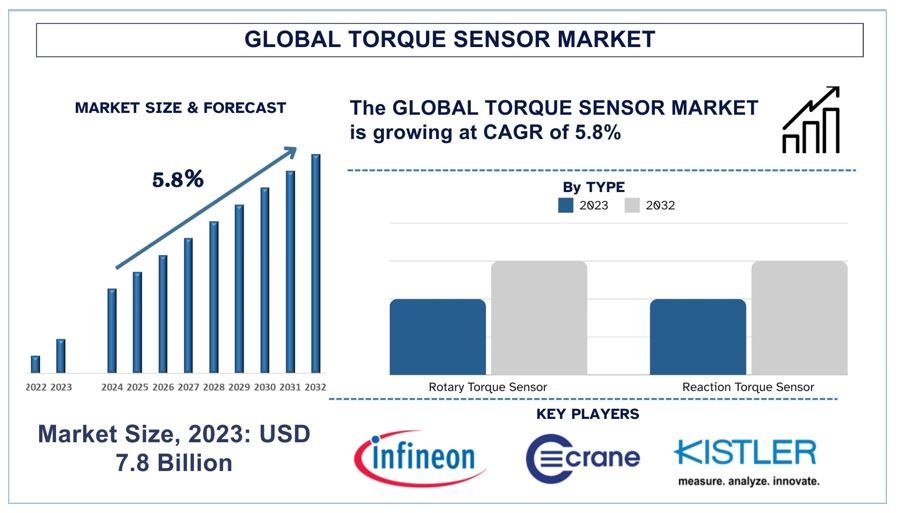 Torque Sensor Market Size & Forecast
Torque Sensor Market Size & Forecast
The Torque Sensor market was valued at USD 7.8 Billion in 2023 and is expected to grow at a strong CAGR of around 5.8% during the forecast period (2024-2032) owing to rising usage of sustainable products.
Torque Sensor Market Analysis
The torque sensor market is witnessing robust growth, driven by the increasing demand for precise torque measurement across various industries such as automotive, aerospace, and industrial automation. In the automotive sector, the need for accurate torque measurement is paramount for optimizing engine performance, improving fuel efficiency, and ensuring the reliability of vehicle components. The rise in electric and hybrid vehicle adoption further amplifies this demand, as these vehicles require advanced torque measurement solutions to manage electric motor performance and battery efficiency. Technological advancements in sensor design, including wireless and non-contact torque sensors, are enhancing the efficiency and performance of these applications.
In the industrial sector, torque sensors are integral to the automation and robotics industries, where precision and efficiency are critical. The adoption of Industry 4.0 practices has led to increased utilization of torque sensors in manufacturing processes to ensure operational accuracy and product quality. Additionally, the aerospace and defense sectors rely on torque sensors for testing and monitoring aircraft components, ensuring safety and performance standards are met. These sectors’ focus on innovation and high-performance standards continues to drive the adoption of advanced torque sensor technologies.
Looking forward, the torque sensor market is poised for sustained growth. Companies are investing heavily in research and development to create innovative, cost-effective torque sensors that cater to the evolving needs of various industries. Expansion into emerging markets, particularly in the Asia-Pacific region, offers significant growth potential due to rapid industrialization and increasing automotive production. Moreover, strategic partnerships and collaborations are facilitating the development of integrated solutions, enhancing value for end-users. Overall, the market’s future looks promising with continued technological advancements and strategic investments from key industry players.
Torque Sensor Market Trends
This section discusses the key market trends that are influencing the various segments of the Torque Sensor market as identified by our team of research experts.
Increasing Adoption in the Automotive Industry:
The automotive industry is a significant driver for the torque sensor market. As the demand for high-performance and fuel-efficient vehicles increases, manufacturers are integrating advanced torque sensors to monitor and optimize engine and drivetrain performance. These sensors play a crucial role in electric vehicles (EVs) and hybrid vehicles, which require precise torque measurements to enhance energy efficiency and performance.
Example: The European Union’s “Green Deal” and the accompanying “Fit for 55” package aim to reduce greenhouse gas emissions by 55% by 2030. These policies include stringent regulations on vehicle emissions and fuel efficiency, pushing automakers to adopt advanced technologies, including torque sensors, to meet these targets.
Growing Demand in Industrial Automation:
Industrial automation is another key driver for the torque sensor market. With the rise of Industry 4.0, there is a growing need for accurate and real-time torque measurement in various automated processes. Torque sensors are essential in ensuring the proper functioning and safety of automated machinery, leading to improved productivity and reduced downtime in manufacturing and production facilities.
Example: The German government’s “Industrie 4.0” initiative supports the widespread adoption of advanced manufacturing technologies, including torque sensors. This policy includes financial incentives and subsidies for companies investing in automation and smart factory technologies, encouraging the integration of torque sensors in industrial applications.

APAC is Expected to Grow with Significant CAGR During Forecast Period
The Asia-Pacific (APAC) region is a key driver in the Torque Sensor market, fueled by rapid industrialization, urbanization, and infrastructure development. The main driver of the Torque Sensor Market in the APAC region is the rapid industrialization and the booming automotive industry, particularly in countries like China, India, Japan, and South Korea. These countries are experiencing significant growth in manufacturing and production activities, leading to increased demand for advanced torque measurement solutions to enhance efficiency and precision in industrial processes. The automotive sector’s expansion, driven by rising vehicle production and sales, especially electric and hybrid vehicles, further fuels this demand. Governments in the region are also promoting the adoption of electric vehicles through favorable policies and investments in infrastructure, which boosts the need for high-precision torque sensors. Additionally, the adoption of Industry 4.0 practices and increased automation in manufacturing facilities drive the integration of torque sensors in robotics and machinery. The region’s focus on technological advancements and innovation supports the development and adoption of sophisticated torque measurement solutions, making APAC a significant growth market for torque sensors.
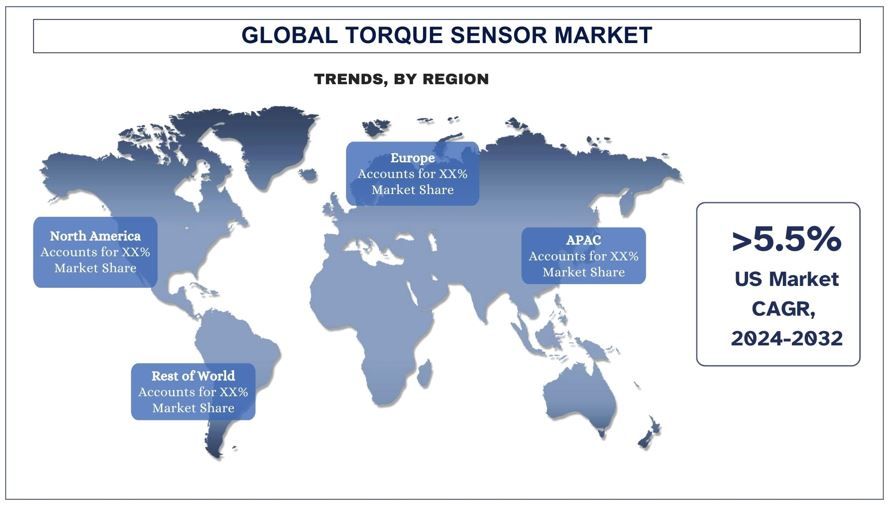
Torque Sensor Industry Overview
The Torque Sensor market is competitive and fragmented, with the presence of several global and international market players. The key players are adopting different growth strategies to enhance their market presence, such as partnerships, agreements, collaborations, new product launches, geographical expansions, and mergers and acquisitions. Some of the major players operating in the market include ABB, Honeywell International Inc, Infineon Technologies AG, Crane Electronics, Applied Measurements Ltd, Kistler Group, Norbar Torque Tools, Sensor Technology Ltd, HBK (Hottinger Brüel & Kjær), and Teledyne Technologies, Inc.
Torque Sensor Market News
January 2020, TE Connectivity announced a new innovation in torque sensors aimed at enhancing the safety and performance of collaborative robots (cobots). These advanced torque sensors are designed to improve efficiency and productivity in automated technologies. The development is part of a broader trend towards increasing automation in industrial applications, which is a significant driver for the torque sensor market. The use of these sensors in cobots allows them to work safely alongside human workers by precisely measuring and controlling the torque applied during various tasks, ensuring both safety and efficiency in operations.
July 2020 – HITEC Sensor Solutions, a leading engineering service provider for a variety of sensor installations for strain measurement acquired Sensor Developments —a Michigan based company specializing in custom strain gauge based force and torque measurement solutions for many industries. The acquisition is in line with HITEC’s projected growth plan and creates a unique opportunity for HITEC to enhance its current facilities and supporting services with the addition of the A2LA accredited calibration laboratory.
Torque Sensor Market Report Coverage
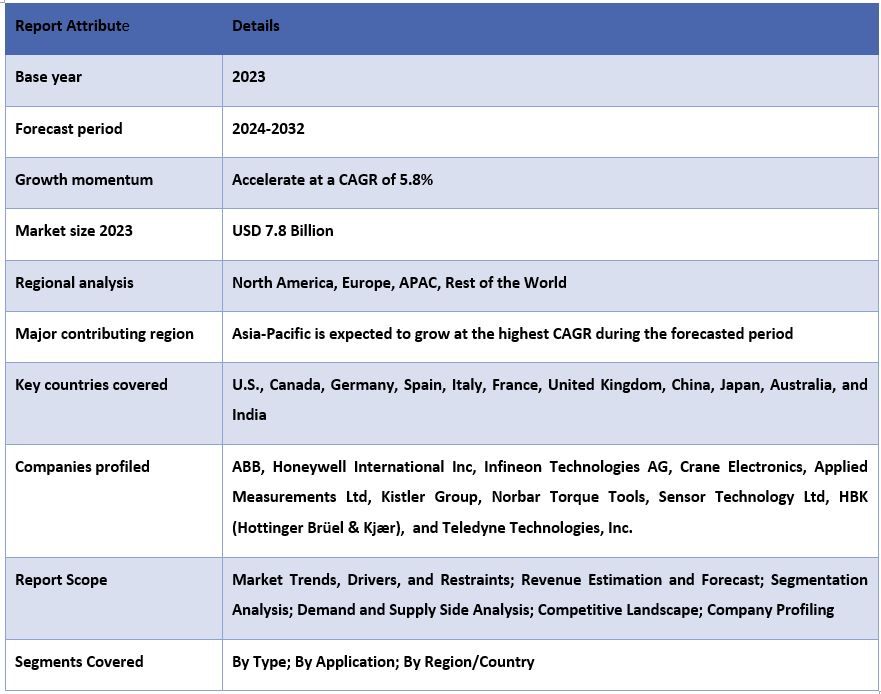
Reasons to buy this report:
- The study includes market sizing and forecasting analysis validated by authenticated key industry experts.
- The report presents a quick review of overall industry performance at one glance.
- The report covers an in-depth analysis of prominent industry peers with a primary focus on key business financials, product portfolios, expansion strategies, and recent developments.
- Detailed examination of drivers, restraints, key trends, and opportunities prevailing in the industry.
- The study comprehensively covers the market across different segments.
- Deep dive regional level analysis of the industry.
Customization Options:
The global Torque Sensor market can further be customized as per the requirement or any other market segment. Besides this, UMI understands that you may have your own business needs, hence feel free to contact us to get a report that completely suits your requirements.
Table of Content
Research Methodology for the Torque Sensor Market Analysis (2024-2032)
Analyzing the historical market, estimating the current market, and forecasting the future market of global Torque Sensor were the three major steps undertaken to create and explore the adoption of Torque Sensor in major regions globally. Exhaustive secondary research was conducted to collect the historical market numbers and estimate the current market size. Secondly, numerous findings and assumptions were taken into consideration to validate these insights. Moreover, exhaustive primary interviews were also conducted with industry experts across the value chain of the global Torque Sensor market. Post assumption and validation of market numbers through primary interviews, we employed a top-down/bottom-up approach to forecasting the complete market size. Thereafter, market breakdown and data triangulation methods were adopted to estimate and analyze the market size of segments and sub-segments of the industry. Detailed methodology is explained below:
Analysis of Historical Market Size
Step 1: In-Depth Study of Secondary Sources:
Detail secondary study was conducted to obtain the historical market size of Torque Sensor through company internal sources such as annual reports & financial statements, performance presentations, press releases, etc., and external sources including journals, news & articles, government publications, competitor publications, sector reports, third-party database, and other credible publications.
Step 2: Market Segmentation:
After obtaining the historical market size of Torque Sensor, we conducted a detailed secondary analysis to gather historical market insights and share for different segments and sub-segments for major regions. Major segments are included in the report, such as type and application. Further country-level analyses were conducted to evaluate the overall adoption of testing models in that region.
Step 3: Factor Analysis:
After acquiring the historical market size of different segments and sub-segments, we conducted a detailed factor analysis to estimate the current market size of Torque Sensor. Further, we conducted factor analysis using dependent and independent variables such as Type and application of Torque Sensor market. A thorough analysis was conducted of demand and supply-side scenarios considering top partnerships, mergers and acquisitions, business expansion, and product launches in the Torque Sensor sector across the globe.
Current Market Size Estimate & Forecast
Current Market Sizing: Based on actionable insights from the above 3 steps, we arrived at the current market size, key players in the global Torque Sensor market, and market shares of the segments. All the required percentage shares split, and market breakdowns were determined using the above-mentioned secondary approach and were verified through primary interviews.
Estimation & Forecasting: For market estimation and forecast, weights were assigned to different factors including drivers & trends, restraints, and opportunities available for the stakeholders. After analyzing these factors, relevant forecasting techniques i.e., the top-down/bottom-up approach were applied to arrive at the market forecast for 2032 for different segments and sub-segments across the major markets globally. The research methodology adopted to estimate the market size encompasses:
- The industry’s market size, in terms of revenue (USD) and the adoption rate of the Torque Sensor across the major markets domestically
- All percentage shares, splits, and breakdowns of market segments and sub-segments
- Key players in the global Torque Sensor market in terms of products offered. Also, the growth strategies adopted by these players to compete in the fast-growing market
Market Size and Share Validation
Primary Research: In-depth interviews were conducted with the Key Opinion Leaders (KOLs) including Top Level Executives (CXO/VPs, Sales Head, Marketing Head, Operational Head, Regional Head, Country Head, etc.) across major regions. Primary research findings were then summarized, and statistical analysis was performed to prove the stated hypothesis. Inputs from primary research were consolidated with secondary findings, hence turning information into actionable insights.
Split of Primary Participants in Different Regions
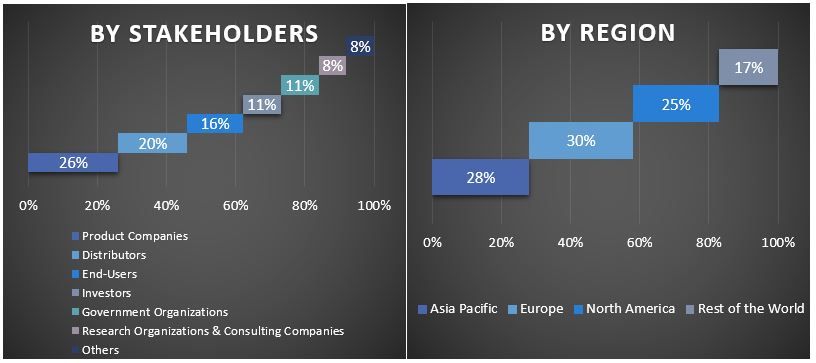
Market Engineering
The data triangulation technique was employed to complete the overall market estimation and to arrive at precise statistical numbers for each segment and sub-segment of the global Torque Sensor market. Data was split into several segments & sub-segments post studying various parameters and trends in the areas of Type and application in the global Torque Sensor market.
The main objective of the Global Torque Sensor market Study
The current & future market trends of the Global Torque Sensor market were pinpointed in the study. Investors can gain strategic insights to base their discretion for investments on the qualitative and quantitative analysis performed in the study. Current and future market trends determined the overall attractiveness of the market at a regional level, providing a platform for the industrial participant to exploit the untapped market to benefit from a first-mover advantage. Other quantitative goals of the studies include:
- Analyze the current and forecast market size of Torque Sensor industry in terms of value (USD). Also, analyze the current and forecast market size of different segments and sub-segments
- Segments in the study include areas of Type and application
- Define and analysis of the regulatory framework for the Torque Sensor industry
- Analyze the value chain involved with the presence of various intermediaries, along with analyzing customer and competitor behaviors of the industry
- Analyze the current and forecast market size of the Torque Sensor market for the major region
- Major countries of regions studied in the report include Asia Pacific, Europe, North America, and the Rest of the World
- Company profiles of the Torque Sensor market and the growth strategies adopted by the market players to sustain in the fast-growing market
- Deep dive regional level analysis of the industry.
Frequently Asked Questions FAQs
Q1: What is the current market size and growth potential of the Torque Sensor market?
Q2: What are the driving factors for the growth of the Torque Sensor market?
Q3: Which segment has the largest share in the Torque Sensor market by Application?
Q4: What are the emerging technologies and trends in the Torque Sensor market?
Q5: Which region will dominate in the Torque Sensor market?
Related Reports
Customers who bought this item also bought


